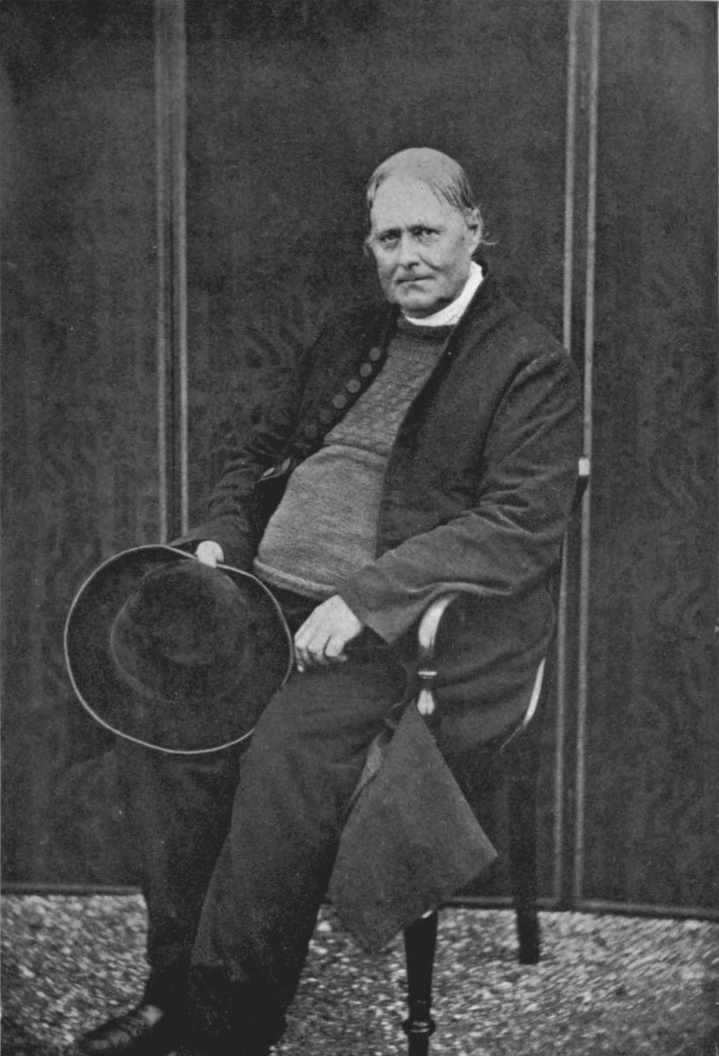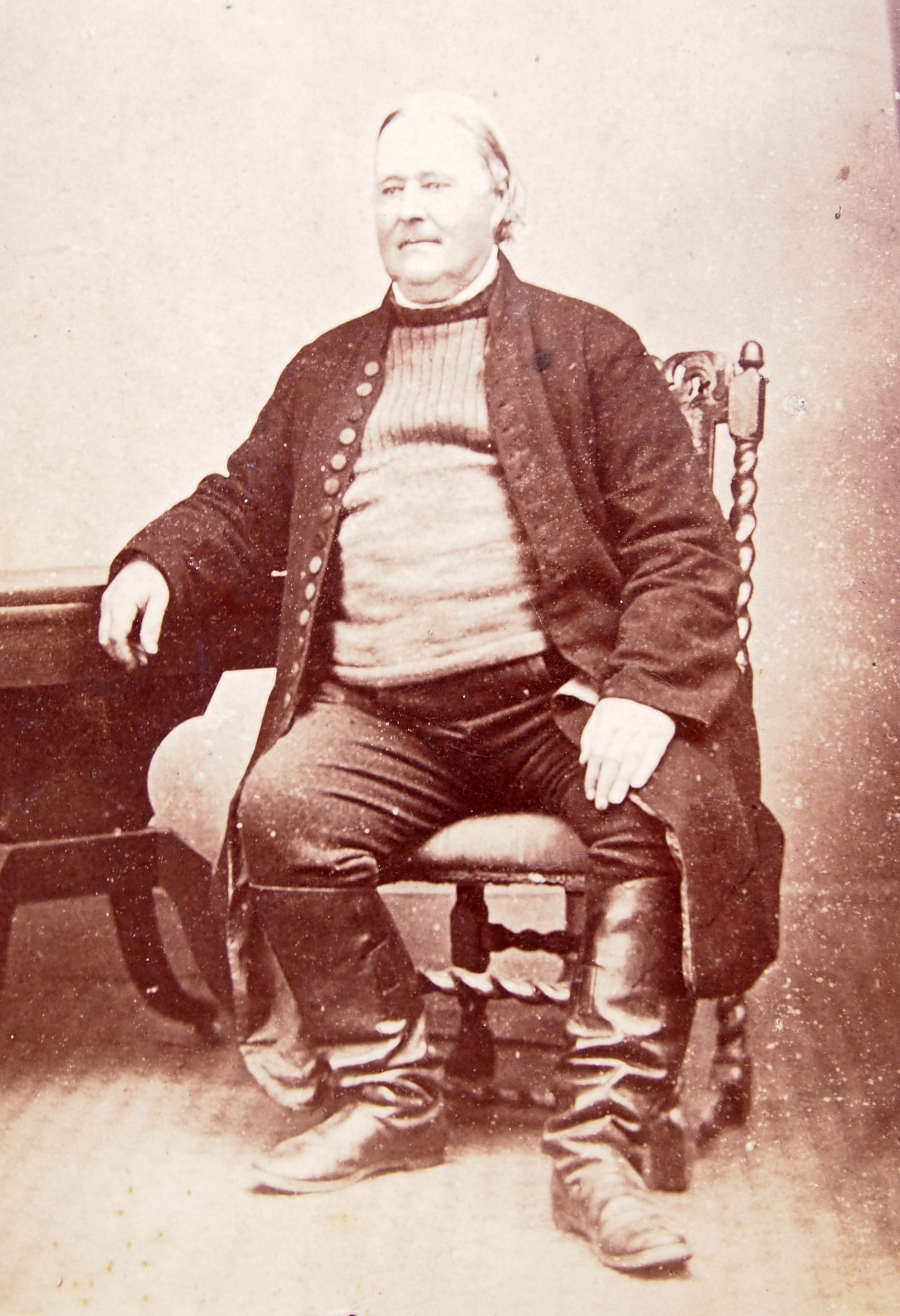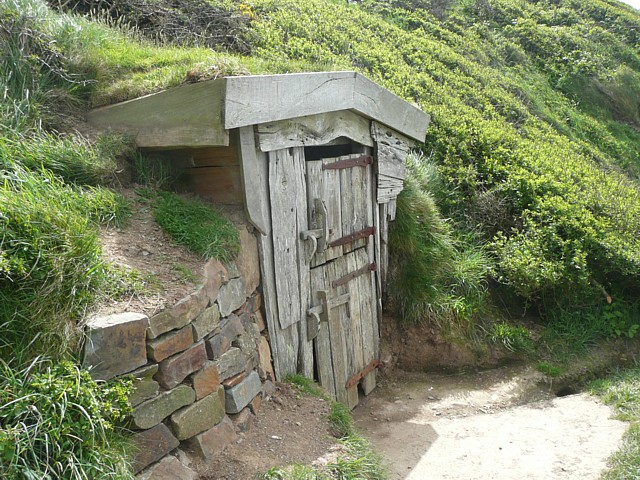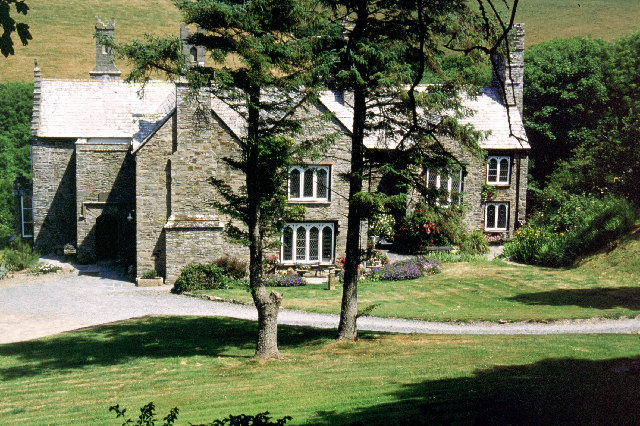Stephen Hawker on:
[Wikipedia]
[Google]
[Amazon]

 Robert Stephen Hawker (1803–1875) was a British
Robert Stephen Hawker (1803–1875) was a British
 Hawker was regarded as a deeply compassionate person giving Christian burials to shipwrecked seamen washed up on the shores of the parish, and was often the first to reach the cliffs when there was a shipwreck. Formerly, the bodies of shipwrecked sailors were often either buried on the beach where they were found or left in the sea. The figurehead of the ship ''Caledonia'', which foundered in September 1842, marks the grave in Morwenstow churchyard of five of the nine-man crew. Hawker described the wrecking in his book ''Footprints of Former Men in Far Cornwall''. Nearby stands a granite cross marked "Unknown Yet Well Known", close to the graves of 30 or more seafarers, including the captain of the ''Alonzo'', wrecked in 1843.
Another notable rescue effort was occasioned by the ''Martha Quayle'' of Liverpool on 4 December 1863. This vessel was seen dismasted off Hennacliff with the crew making the best of their situation; two boats were lowered from the side of which one was driven northward by the heavy seas while the other came ashore unmanned. The first boat was seen by Hawker being rowed by five men but did not make a landing until Clovelly. An attempt to launch the Bude lifeboat or bring her along the land failed but by riding along the coast as far as Clovelly Hawker found the mate and four crewmen safe. He failed to persuade the men of Clovelly to launch a skiff but a customs officer from Bideford happened to be there and was able to send a message to the Appledore lifeboatmen to assist if they could. The ''Martha Quayle'' was unlighted by Saturday nightfall. On the Sunday he sent a man towards Clovelly and sometime later that man brought thanks for their deliverance from the captain and crew back to Hawker. A rowing boat crewed by 19 men went north and jointly with the Appledore lifeboatmen who had brought their boat by land got the ''Martha Quayle'' on shore ready to be sold by auction next day.
Hawker was regarded as a deeply compassionate person giving Christian burials to shipwrecked seamen washed up on the shores of the parish, and was often the first to reach the cliffs when there was a shipwreck. Formerly, the bodies of shipwrecked sailors were often either buried on the beach where they were found or left in the sea. The figurehead of the ship ''Caledonia'', which foundered in September 1842, marks the grave in Morwenstow churchyard of five of the nine-man crew. Hawker described the wrecking in his book ''Footprints of Former Men in Far Cornwall''. Nearby stands a granite cross marked "Unknown Yet Well Known", close to the graves of 30 or more seafarers, including the captain of the ''Alonzo'', wrecked in 1843.
Another notable rescue effort was occasioned by the ''Martha Quayle'' of Liverpool on 4 December 1863. This vessel was seen dismasted off Hennacliff with the crew making the best of their situation; two boats were lowered from the side of which one was driven northward by the heavy seas while the other came ashore unmanned. The first boat was seen by Hawker being rowed by five men but did not make a landing until Clovelly. An attempt to launch the Bude lifeboat or bring her along the land failed but by riding along the coast as far as Clovelly Hawker found the mate and four crewmen safe. He failed to persuade the men of Clovelly to launch a skiff but a customs officer from Bideford happened to be there and was able to send a message to the Appledore lifeboatmen to assist if they could. The ''Martha Quayle'' was unlighted by Saturday nightfall. On the Sunday he sent a man towards Clovelly and sometime later that man brought thanks for their deliverance from the captain and crew back to Hawker. A rowing boat crewed by 19 men went north and jointly with the Appledore lifeboatmen who had brought their boat by land got the ''Martha Quayle'' on shore ready to be sold by auction next day.
 The Harvest Festival that we know today was introduced in the parish of Morwenstow in 1843 by Hawker. He invited his parishioners to a Harvest service as he wanted to give thanks to God for providing such plenty. This service took place on 1 October and bread made from the first cut of corn was taken at communion.
"Parson Hawker", as he was known to his parishioners, was something of an eccentric, both in his clothes and his habits. He loved bright colours and it seems the only black things he wore were his socks. He built a small hut, that became known as Hawker's Hut, from driftwood on the cliffs overlooking the Atlantic Ocean. He spent many hours there writing his poems and letters. This driftwood hut is now the smallest property in the National Trust portfolio. Many of the more fantastic stories told about Hawker are based on an unreliable biography published by the Reverend Sabine Baring-Gould in 1876, only a few months after Hawker's death. Other eccentricities attributed to him include dressing up as a mermaid and excommunicating his cat for mousing on Sundays. He dressed in claret-coloured coat, blue fisherman's jersey, long sea-boots, a pink brimless hat and a poncho made from a yellow horse blanket, which he claimed was the ancient habit of St Padarn. He talked to birds, invited his nine cats into church and kept a pig as a pet.
He built himself a remarkable vicarage, with chimneys modelled on the towers of the churches in his life: Tamerton, where he had been curate; Morwenstow and Welcombe; plus that of
The Harvest Festival that we know today was introduced in the parish of Morwenstow in 1843 by Hawker. He invited his parishioners to a Harvest service as he wanted to give thanks to God for providing such plenty. This service took place on 1 October and bread made from the first cut of corn was taken at communion.
"Parson Hawker", as he was known to his parishioners, was something of an eccentric, both in his clothes and his habits. He loved bright colours and it seems the only black things he wore were his socks. He built a small hut, that became known as Hawker's Hut, from driftwood on the cliffs overlooking the Atlantic Ocean. He spent many hours there writing his poems and letters. This driftwood hut is now the smallest property in the National Trust portfolio. Many of the more fantastic stories told about Hawker are based on an unreliable biography published by the Reverend Sabine Baring-Gould in 1876, only a few months after Hawker's death. Other eccentricities attributed to him include dressing up as a mermaid and excommunicating his cat for mousing on Sundays. He dressed in claret-coloured coat, blue fisherman's jersey, long sea-boots, a pink brimless hat and a poncho made from a yellow horse blanket, which he claimed was the ancient habit of St Padarn. He talked to birds, invited his nine cats into church and kept a pig as a pet.
He built himself a remarkable vicarage, with chimneys modelled on the towers of the churches in his life: Tamerton, where he had been curate; Morwenstow and Welcombe; plus that of
 *1821: ''Tendrils''
*1832: ''Records of the Western Shore'' Oxford
*1840: ''Ecclesia: a volume of poems'' Oxford
*1843: ''Reeds Shaken with the Wind''
*1846: ''Echoes from Old Cornwall''
*1864
*1821: ''Tendrils''
*1832: ''Records of the Western Shore'' Oxford
*1840: ''Ecclesia: a volume of poems'' Oxford
*1843: ''Reeds Shaken with the Wind''
*1846: ''Echoes from Old Cornwall''
*1864
''The Quest of the Sangraal: Chant the First''
Exeter; (part of an unfinished Arthurian poem) *1870: ''Footprints of Former Men in Cornwall'' (a collection of papers) *1908: ''Cornish Ballads & Other Poems'', introduction by C. E. Byles *1975: ''Selected Poems: Robert Stephen Hawker''. Ed. Cecil Woolf
Robert Stephen Hawker: his life and writings
* * * * * * {{DEFAULTSORT:Hawker, Robert Stephen 1803 births 1875 deaths Writers from Cornwall English antiquarians Anglican poets Clergy from Plymouth, Devon Alumni of Pembroke College, Oxford English Roman Catholics Anglican priest converts to Roman Catholicism 19th-century English Anglican priests People educated at Pate's Grammar School Burials in Devon People educated at Liskeard Grammar School English male poets 19th-century English poets 19th-century English male writers English male non-fiction writers Writers from Plymouth, Devon

Anglican
Anglicanism is a Western Christian tradition that has developed from the practices, liturgy, and identity of the Church of England following the English Reformation, in the context of the Protestant Reformation in Europe. It is one of th ...
priest, poet, antiquarian
An antiquarian or antiquary () is an fan (person), aficionado or student of antiquities or things of the past. More specifically, the term is used for those who study history with particular attention to ancient artifact (archaeology), artifac ...
and reputed eccentric, known to his parishioners as Parson Hawker. He is best known as the writer of " The Song of the Western Men" with its chorus line of "And shall Trelawny die? / Here's twenty thousand Cornish men / will know the reason why!", which he published anonymously in 1825. His name became known after Charles Dickens acknowledged his authorship of "The Song of the Western Men" in the serial magazine ''Household Words
''Household Words'' was an English weekly magazine edited by Charles Dickens in the 1850s. It took its name from the line in Shakespeare's ''Henry V'': "Familiar in his mouth as household words."
History
During the planning stages, titles origi ...
''.
Biography
Hawker was born in the clergy house of Charles Church, Plymouth, on 3 December 1803. He was the eldest of nine children and grandson ofRobert Hawker
Robert Hawker (1753–1827) was an Anglican priest in Devon, vicar of Charles Church, Plymouth. Called "Star of the West" for his popular preaching, he was known as an evangelical and author. The Cornish poet Robert Stephen Hawker was his gr ...
, vicar of Charles Church. When he was about ten years old his father, Jacob Stephen Hawker, took Holy Orders and left Plymouth to become curate of Altarnun, leaving him in the care of his grandparents. By this time Hawker was already reading and writing poetry. He was educated at Liskeard Grammar School
Liskeard ( ; kw, Lyskerrys) is a small ancient stannary and market town in south-east Cornwall, South West England. It is situated approximately 20 miles (32 km) west of Plymouth, west of the Devon border, and 12 miles (20 km) eas ...
and Cheltenham Grammar School (now Pate's Grammar School). As an undergraduate, aged 19, he married Charlotte Eliza I'ans, aged 41. The couple spent their honeymoon at Tintagel in 1823, a place that kindled his lifelong fascination with Arthurian legend and later inspired him to write ''The Quest of the Sangraal''. This marriage, along with a legacy, helped to finance his studies at Pembroke College, Oxford
Pembroke College, a constituent college of the University of Oxford, is located at Pembroke Square, Oxford. The college was founded in 1624 by King James I of England, using in part the endowment of merchant Thomas Tesdale, and was named after ...
. He graduated in 1827 and won the 1827 Newdigate Prize for poetry.
Hawker was ordained in 1831, becoming curate at North Tamerton and then, in 1834, vicar of the church at Morwenstow, where he remained throughout his life. When he arrived at Morwenstow there had not been a vicar in residence for over a century. Smugglers and wreckers were apparently numerous in the area. A contemporary report says the Morwenstow wreckers "allowed a fainting brother to perish in the sea ... without extending a hand of safety."
Hawker's first wife, Charlotte, died in 1863 and the following year, aged 60, he married Pauline Kuczynski, aged 20. They had three daughters, Morwenna Pauline Hawker, Rosalind Hawker and Juliot Hawker. Robert Hawker died on 15 August 1875, having become a Roman Catholic on his deathbed. He was buried in Plymouth's Ford Park Cemetery. His funeral was noteworthy because the mourners wore purple instead of the traditional black.
Accomplishments
Shipwrecks
 Hawker was regarded as a deeply compassionate person giving Christian burials to shipwrecked seamen washed up on the shores of the parish, and was often the first to reach the cliffs when there was a shipwreck. Formerly, the bodies of shipwrecked sailors were often either buried on the beach where they were found or left in the sea. The figurehead of the ship ''Caledonia'', which foundered in September 1842, marks the grave in Morwenstow churchyard of five of the nine-man crew. Hawker described the wrecking in his book ''Footprints of Former Men in Far Cornwall''. Nearby stands a granite cross marked "Unknown Yet Well Known", close to the graves of 30 or more seafarers, including the captain of the ''Alonzo'', wrecked in 1843.
Another notable rescue effort was occasioned by the ''Martha Quayle'' of Liverpool on 4 December 1863. This vessel was seen dismasted off Hennacliff with the crew making the best of their situation; two boats were lowered from the side of which one was driven northward by the heavy seas while the other came ashore unmanned. The first boat was seen by Hawker being rowed by five men but did not make a landing until Clovelly. An attempt to launch the Bude lifeboat or bring her along the land failed but by riding along the coast as far as Clovelly Hawker found the mate and four crewmen safe. He failed to persuade the men of Clovelly to launch a skiff but a customs officer from Bideford happened to be there and was able to send a message to the Appledore lifeboatmen to assist if they could. The ''Martha Quayle'' was unlighted by Saturday nightfall. On the Sunday he sent a man towards Clovelly and sometime later that man brought thanks for their deliverance from the captain and crew back to Hawker. A rowing boat crewed by 19 men went north and jointly with the Appledore lifeboatmen who had brought their boat by land got the ''Martha Quayle'' on shore ready to be sold by auction next day.
Hawker was regarded as a deeply compassionate person giving Christian burials to shipwrecked seamen washed up on the shores of the parish, and was often the first to reach the cliffs when there was a shipwreck. Formerly, the bodies of shipwrecked sailors were often either buried on the beach where they were found or left in the sea. The figurehead of the ship ''Caledonia'', which foundered in September 1842, marks the grave in Morwenstow churchyard of five of the nine-man crew. Hawker described the wrecking in his book ''Footprints of Former Men in Far Cornwall''. Nearby stands a granite cross marked "Unknown Yet Well Known", close to the graves of 30 or more seafarers, including the captain of the ''Alonzo'', wrecked in 1843.
Another notable rescue effort was occasioned by the ''Martha Quayle'' of Liverpool on 4 December 1863. This vessel was seen dismasted off Hennacliff with the crew making the best of their situation; two boats were lowered from the side of which one was driven northward by the heavy seas while the other came ashore unmanned. The first boat was seen by Hawker being rowed by five men but did not make a landing until Clovelly. An attempt to launch the Bude lifeboat or bring her along the land failed but by riding along the coast as far as Clovelly Hawker found the mate and four crewmen safe. He failed to persuade the men of Clovelly to launch a skiff but a customs officer from Bideford happened to be there and was able to send a message to the Appledore lifeboatmen to assist if they could. The ''Martha Quayle'' was unlighted by Saturday nightfall. On the Sunday he sent a man towards Clovelly and sometime later that man brought thanks for their deliverance from the captain and crew back to Hawker. A rowing boat crewed by 19 men went north and jointly with the Appledore lifeboatmen who had brought their boat by land got the ''Martha Quayle'' on shore ready to be sold by auction next day.
Ritual innovation, eccentricity; hut and vicarage
 The Harvest Festival that we know today was introduced in the parish of Morwenstow in 1843 by Hawker. He invited his parishioners to a Harvest service as he wanted to give thanks to God for providing such plenty. This service took place on 1 October and bread made from the first cut of corn was taken at communion.
"Parson Hawker", as he was known to his parishioners, was something of an eccentric, both in his clothes and his habits. He loved bright colours and it seems the only black things he wore were his socks. He built a small hut, that became known as Hawker's Hut, from driftwood on the cliffs overlooking the Atlantic Ocean. He spent many hours there writing his poems and letters. This driftwood hut is now the smallest property in the National Trust portfolio. Many of the more fantastic stories told about Hawker are based on an unreliable biography published by the Reverend Sabine Baring-Gould in 1876, only a few months after Hawker's death. Other eccentricities attributed to him include dressing up as a mermaid and excommunicating his cat for mousing on Sundays. He dressed in claret-coloured coat, blue fisherman's jersey, long sea-boots, a pink brimless hat and a poncho made from a yellow horse blanket, which he claimed was the ancient habit of St Padarn. He talked to birds, invited his nine cats into church and kept a pig as a pet.
He built himself a remarkable vicarage, with chimneys modelled on the towers of the churches in his life: Tamerton, where he had been curate; Morwenstow and Welcombe; plus that of
The Harvest Festival that we know today was introduced in the parish of Morwenstow in 1843 by Hawker. He invited his parishioners to a Harvest service as he wanted to give thanks to God for providing such plenty. This service took place on 1 October and bread made from the first cut of corn was taken at communion.
"Parson Hawker", as he was known to his parishioners, was something of an eccentric, both in his clothes and his habits. He loved bright colours and it seems the only black things he wore were his socks. He built a small hut, that became known as Hawker's Hut, from driftwood on the cliffs overlooking the Atlantic Ocean. He spent many hours there writing his poems and letters. This driftwood hut is now the smallest property in the National Trust portfolio. Many of the more fantastic stories told about Hawker are based on an unreliable biography published by the Reverend Sabine Baring-Gould in 1876, only a few months after Hawker's death. Other eccentricities attributed to him include dressing up as a mermaid and excommunicating his cat for mousing on Sundays. He dressed in claret-coloured coat, blue fisherman's jersey, long sea-boots, a pink brimless hat and a poncho made from a yellow horse blanket, which he claimed was the ancient habit of St Padarn. He talked to birds, invited his nine cats into church and kept a pig as a pet.
He built himself a remarkable vicarage, with chimneys modelled on the towers of the churches in his life: Tamerton, where he had been curate; Morwenstow and Welcombe; plus that of Magdalen College, Oxford
Magdalen College (, ) is a constituent college of the University of Oxford. It was founded in 1458 by William of Waynflete. Today, it is the fourth wealthiest college, with a financial endowment of £332.1 million as of 2019 and one of the s ...
. The old kitchen chimney is a replica of Hawker's mother's tomb.
Of his interesting life, Hawker himself wrote: "What a life mine would be if it were all written and published in a book."
The American poet Joyce Kilmer described him as "a coast life-guard in a cassock" and was to some extent influenced by Hawker's poetry.Hillis, John. ''Joyce Kilmer: A Bio-Bibliography''. Master of Science (Library Science) thesis. Catholic University of America, Washington, DC; 1962; p. 19
Works
 *1821: ''Tendrils''
*1832: ''Records of the Western Shore'' Oxford
*1840: ''Ecclesia: a volume of poems'' Oxford
*1843: ''Reeds Shaken with the Wind''
*1846: ''Echoes from Old Cornwall''
*1864
*1821: ''Tendrils''
*1832: ''Records of the Western Shore'' Oxford
*1840: ''Ecclesia: a volume of poems'' Oxford
*1843: ''Reeds Shaken with the Wind''
*1846: ''Echoes from Old Cornwall''
*1864''The Quest of the Sangraal: Chant the First''
Exeter; (part of an unfinished Arthurian poem) *1870: ''Footprints of Former Men in Cornwall'' (a collection of papers) *1908: ''Cornish Ballads & Other Poems'', introduction by C. E. Byles *1975: ''Selected Poems: Robert Stephen Hawker''. Ed. Cecil Woolf
References and bibliography
*''The Poetical Works of Robert Stephen Hawker'' (1879); now first collected and arranged by J. G. Godwin; ncludes ''Notice'', pp. vii–xviii London: C. Kegan Paul *''The Life and Letters of R. S. Hawker (sometime Vicar of Morwenstow)'' (1906) by C. E. Byles. London: Bodley Head *''"Passon" Hawker of Morwenstow'' ( 959; H. R. Smallcombe. Plymouth: he author*''The Wreck at Sharpnose Point'' (2003) by Jeremy Seal, Picador. *''Hawker of Morwenstow'' (2002) byPiers Brendon
Piers Brendon (born 21 December 1940) is a British historian and writer, known for historical and biographical works. He was educated at Shrewsbury School and Magdalene College, Cambridge, where he read history. He received a Ph.D. degree for h ...
, Random House.
*''The Land Near the Dark Cornish Sea'' (2004) by A. Hale, ''Journal for the Academic Study of Magic'', Issue 2, Pages 206–225
*”Reverend Hawker of Morwenstow" by 3 Daft Monkeys
3 Daft Monkeys are a world music-influenced acoustic band from Cornwall, UK, consisting of Tim Ashton, Athene Roberts, Rich Mulryne, and Jamie Graham. The instrumentation consists of vocals, fiddle, twelve-string guitar, bass guitar and percuss ...
. From the album "of stones and bones"
References
Bibliography
* *Woolf, Cecil (1965)."Hawker of Morwenstow, 1803-1875." '' The Book Collector'' 14 no 1 (spring): 62–71; 14 no 2 (summer): 202–211.External links
Robert Stephen Hawker: his life and writings
* * * * * * {{DEFAULTSORT:Hawker, Robert Stephen 1803 births 1875 deaths Writers from Cornwall English antiquarians Anglican poets Clergy from Plymouth, Devon Alumni of Pembroke College, Oxford English Roman Catholics Anglican priest converts to Roman Catholicism 19th-century English Anglican priests People educated at Pate's Grammar School Burials in Devon People educated at Liskeard Grammar School English male poets 19th-century English poets 19th-century English male writers English male non-fiction writers Writers from Plymouth, Devon